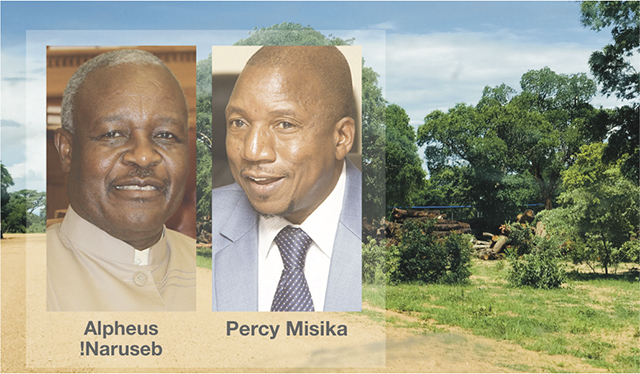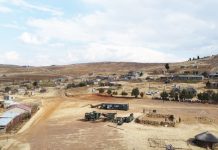Shifeta – who has been opposed to timber traders and harvesters – said this in parliament last week when he revealed that about 68 000 rare trees were illegally chopped down in Kavango East.
“The scientific projection is that if timber harvests had to be permitted at such high scale and rate as it happened until last year when it was suspended, it will take less than 20 years to bid farewell to the only forest zones we have,” he stated.
The warning comes at a time when Shifeta suggested that the Ministry of Agriculture, Water and Forestry should charge public officials who allowed illegal timber harvesting.
Sources said some agriculture and forestry officials are bribed to allow the plunder of rare trees.
Namibias best forests are found in the Kavango East, Kavango West and Zambezi regions, where there has been widespread timber harvesting.
“Namibia is an arid country. This makes our forestry and hardwood resources even more precious. Thus, we need to manage them properly and sustainably. Namibia is not like other tropical rainforest countries where you can undertake large-scale commercial timber harvesting,” he said.
Some farmers asked the government to replant the trees they want to cut down, but Shifeta rejected that proposal.
“In many cases, these are protected species [trees], and it can take 100 years for these species to regrow, and they cannot be sufficiently replanted in the short to medium-term,” he said.
According to the minister, the forest resources on these farms are being destroyed for the short-term gain of a few.
Commercial timber harvesting applicants are obliged by law to get permission from the environmental commissioner before the issuing of any harvesting licence.
It is a requirement to do a thorough assessment of the impact of the planned activity on all aspects of the environment, he said.
Shifeta added that applicants are also required to implement measures to reduce the impacts of these activities on the environment.
“This provision of the Environmental Management Act had been largely ignored until it was decided to suspend the harvesting, transport, marketing and export of timber on 26 November 2018,” he said.
His ministry received around 230 applications for timber harvesting since the ban. Shifeta said he is concerned about the commercial harvesting of timber at farms in Kavango East and Kavango West.
These applicants, mostly politicians and their cronies from Rundu, want to cut down around 200 000 trees.
The minister said none of the applicants had done an environmental impact assessment on the impact of this harvesting on the environment.
“It is estimated that permits have already been issued without environmental clearance certificates in Kavango East relating to timber harvesting, and 68 000 trees have been harvested,” he continued.
The minister made these conclusions based on their assessment from a ministerial visit to the affected regions last month.
“Further observed from the field visits are that the farmers are contracting foreigners, and there is very little monitoring of their activities as required by law,” Shifeta said.
The timber is exported through different routes, including Walvis Bay, Buitepos and Ngoma, where permits are issued, the minister added.
Shifeta explained that the agriculture ministry is partly failing to control the harvesting of rosewood.
“The directorate of forestry issues the permits, but there is very little monitoring and enforcement on the ground due to limited manpower in the Ministry of Agriculture, Water and Forestry,” he said.
Shifeta stated that although the directorate of forestry uses marketing permits as a tool to control the transport of the logs, it is difficult to implement due to the high volumes of trucks and timber being exported.
He recommended that these trucks be weighed at the weighbridges, while timber harvesting needs to be restricted and carried out between 07h00 to 17h00.
“Timber operations are being undertaken at night time, and this opens up opportunities for illegal harvesting. Animals may be displaced by noise, which could result in an increased risk of poaching if activities are allowed at night time,” the minister continued.
Shifeta said the size of harvested timber is questionable (some are less than 45 cm in diameter) as harvesters claim that small trees are branches from the main trees.
This complicates the monitoring process because it cannot be verified.
The agriculture ministrys executive director Percy Misika told The Namibian on Saturday that the government has dispatched three officials to investigate allegations of illegal harvesting of timber in Kavango East. He said the two officials from his ministry and one from the Ministry of Environment and Tourism were sent to Kavango East to investigate claims of illegal harvesting of rosewood, despite the current ban on the chopping down of trees. He said the ministry asked for police assistance to probe the matter.
The team is tasked with establishing whether there were permits issued by the forestry department, and who had given them.
According to Misika, the ministry will then deal with the officials who issued the permits






